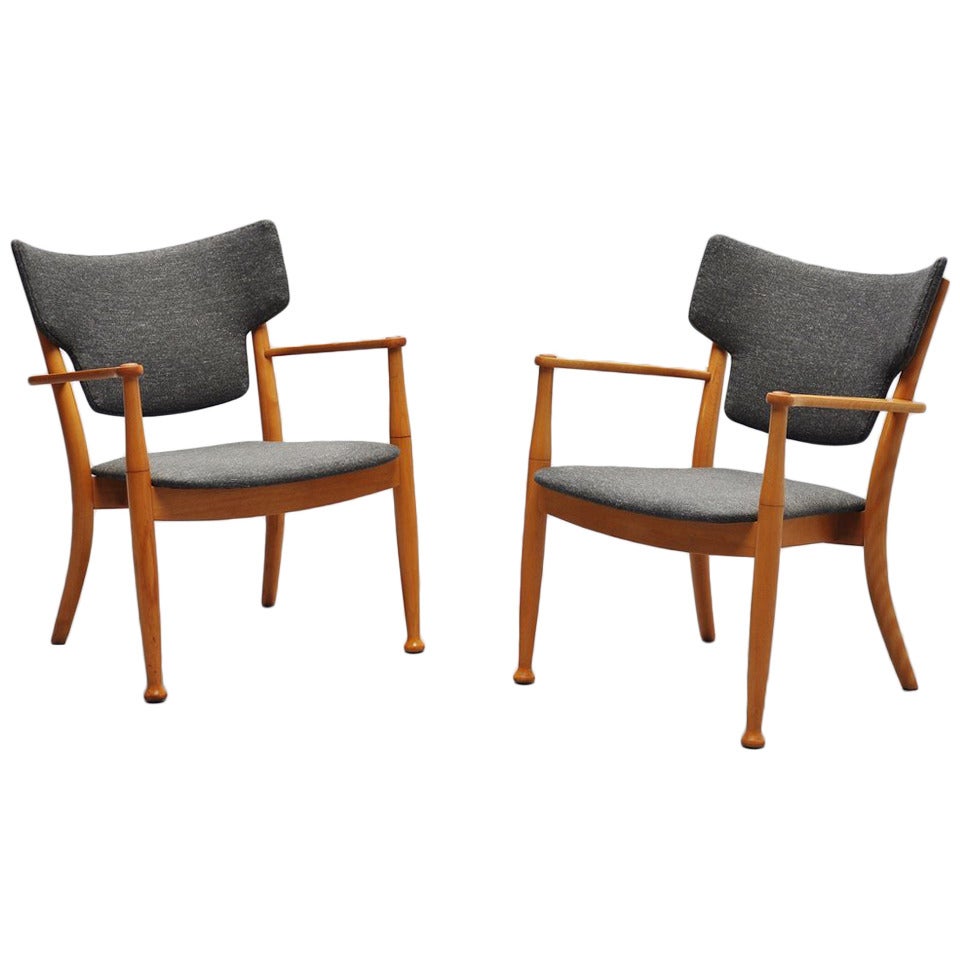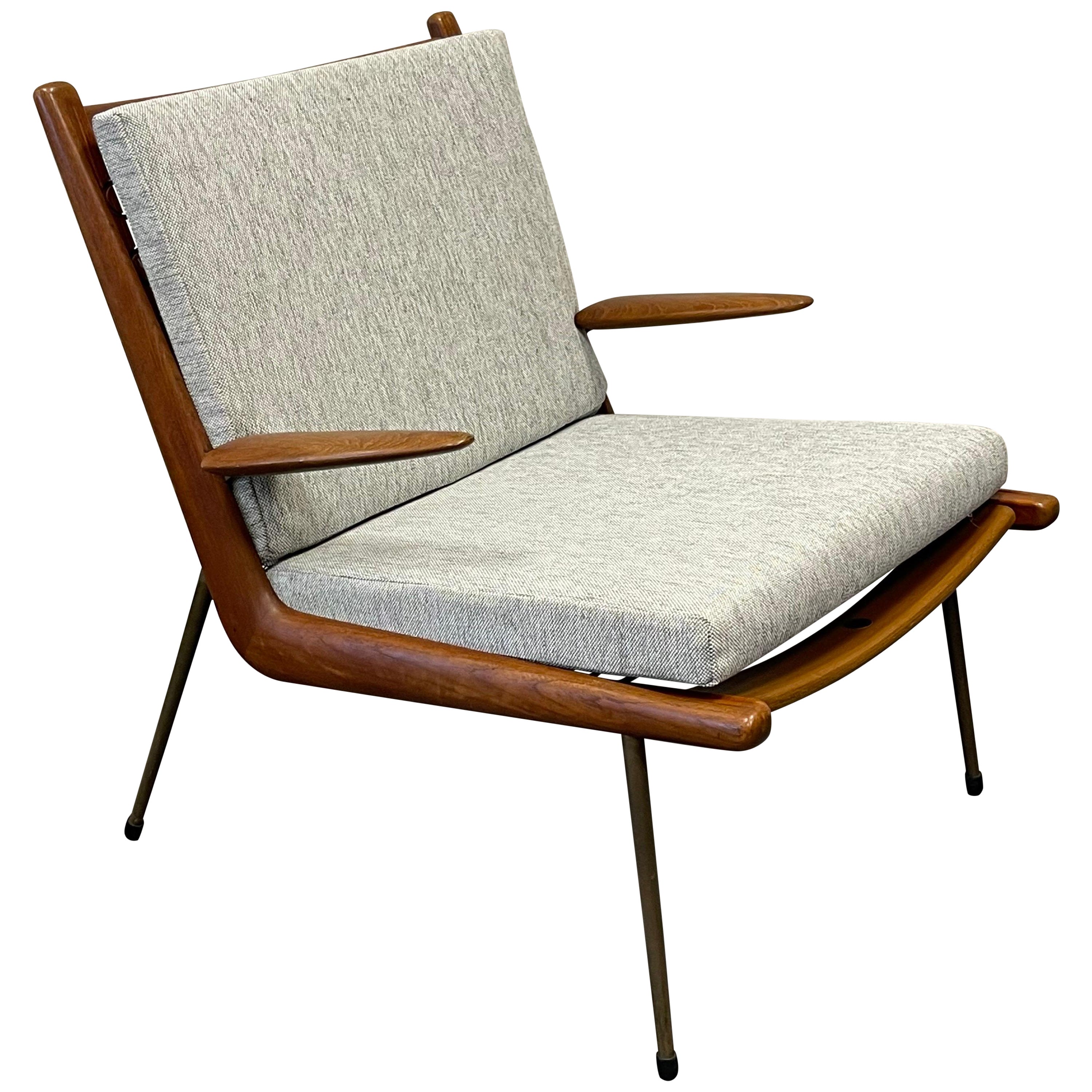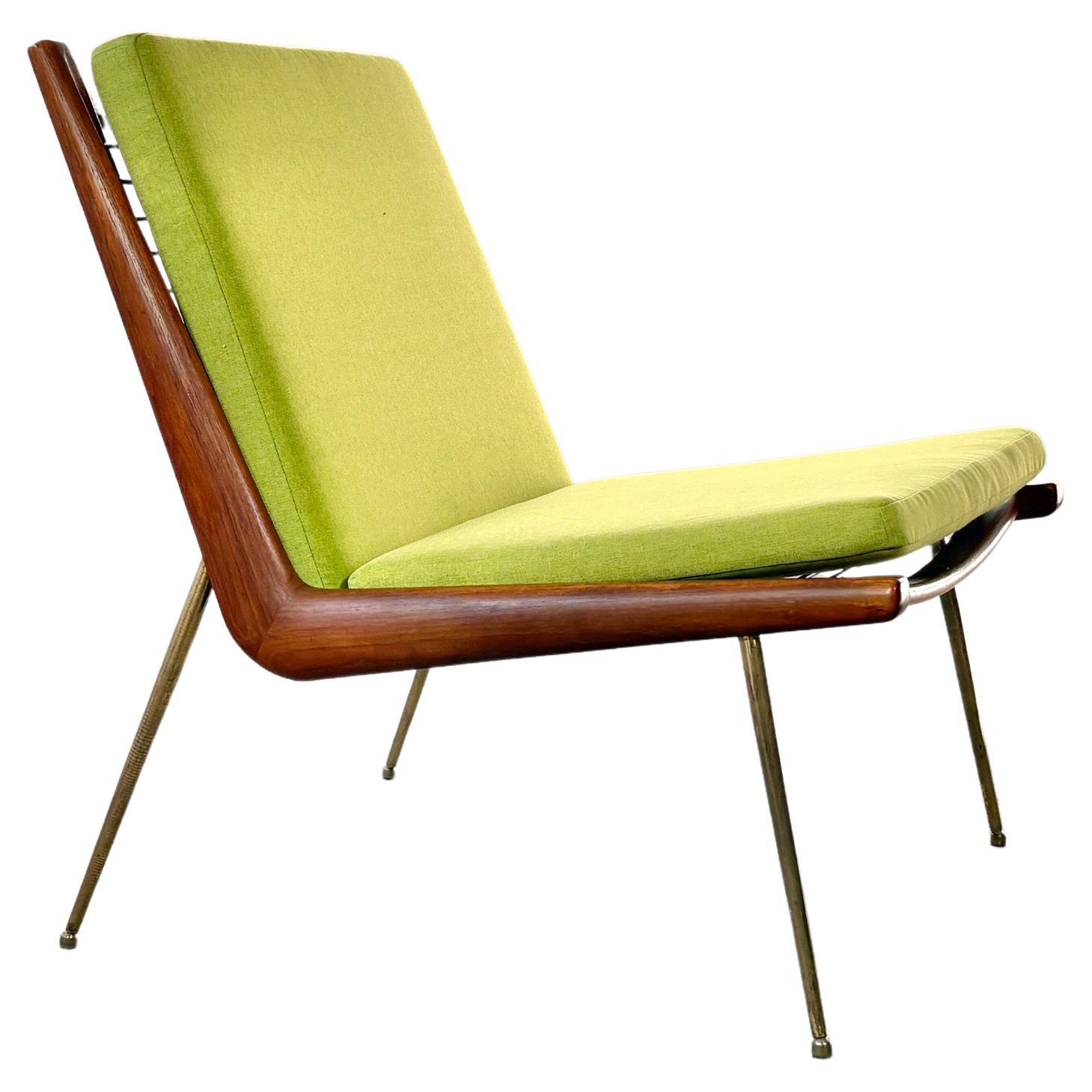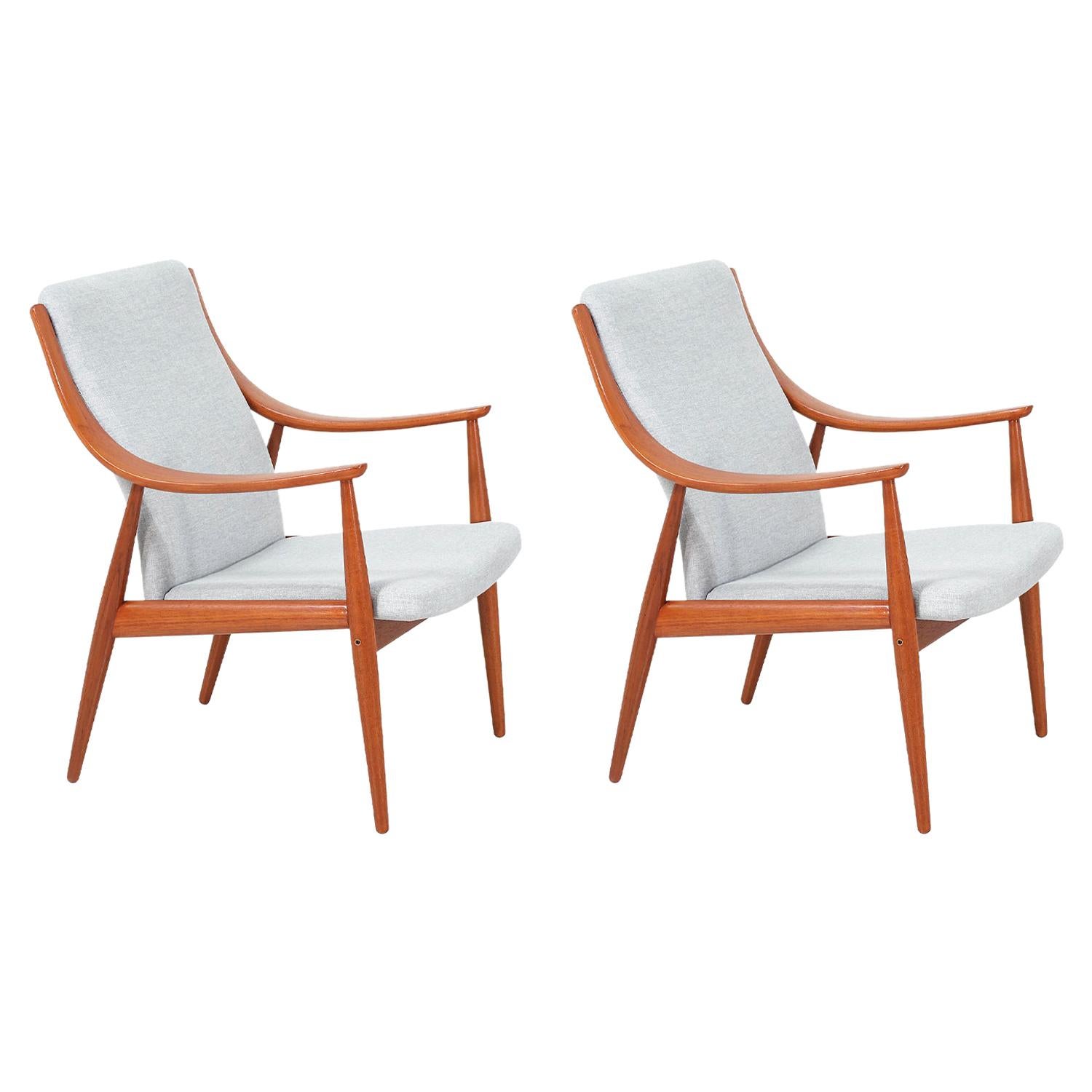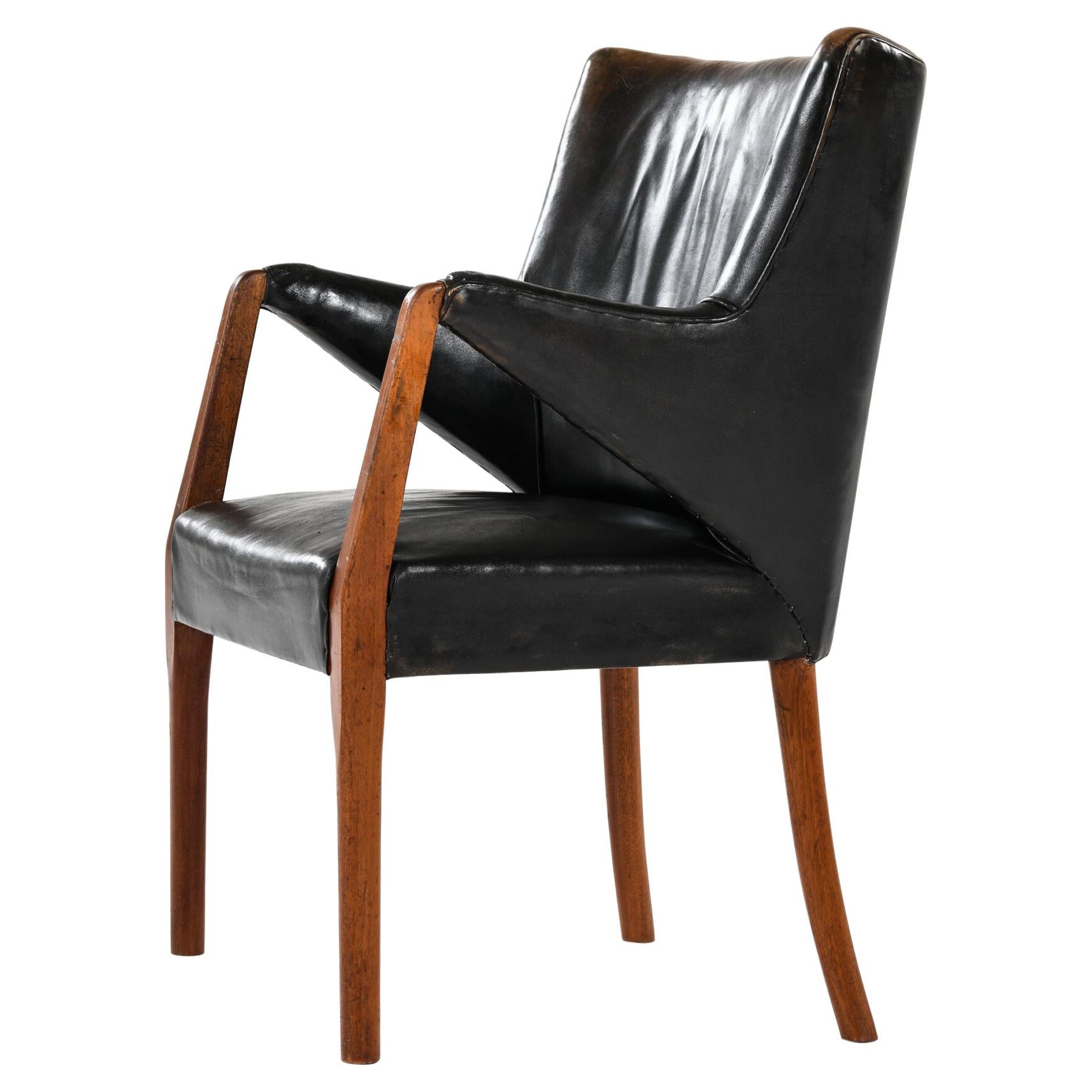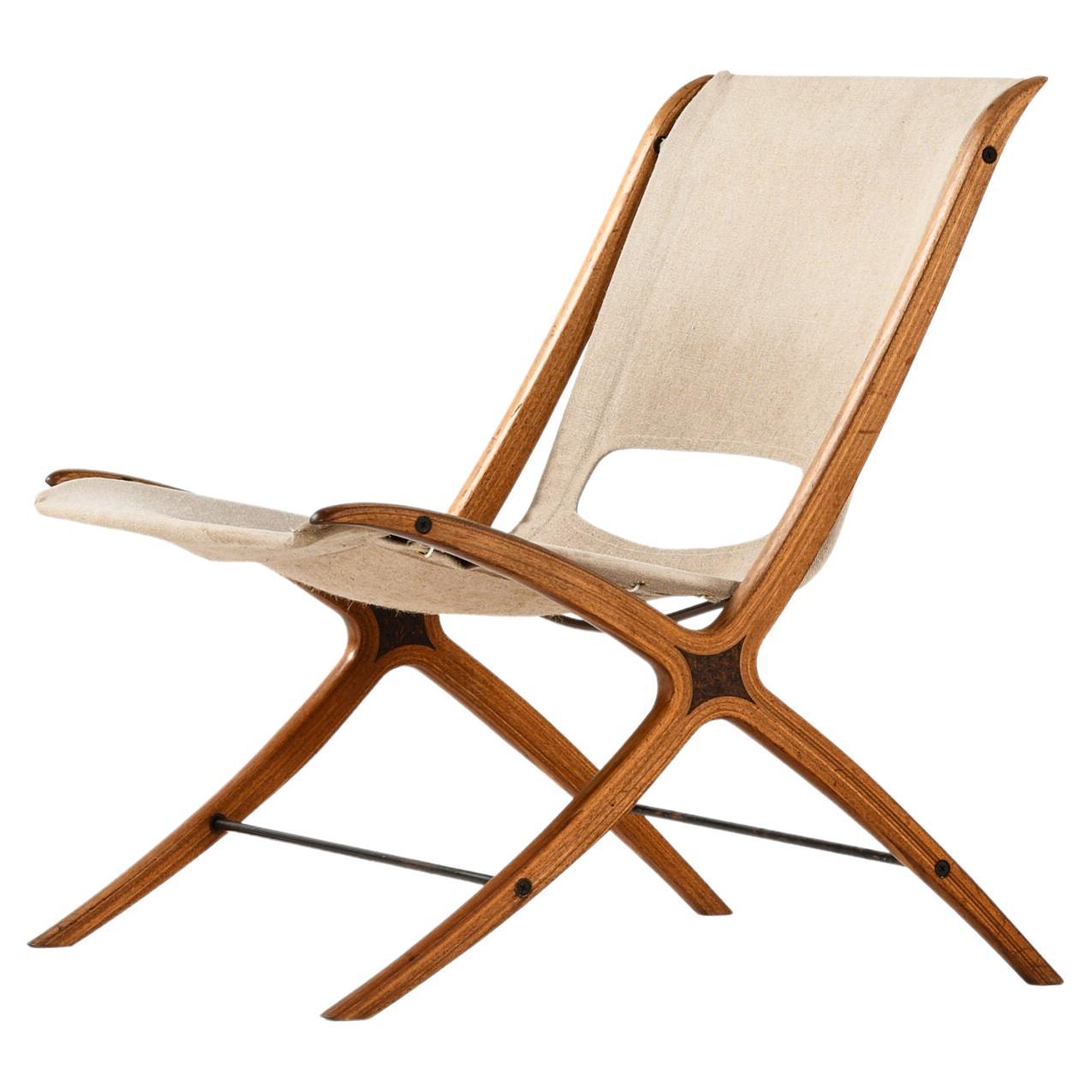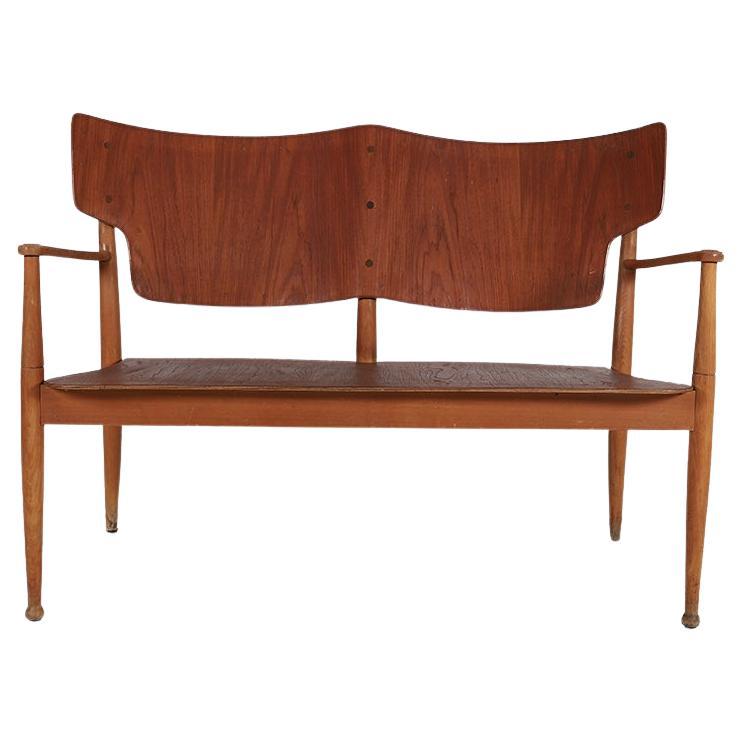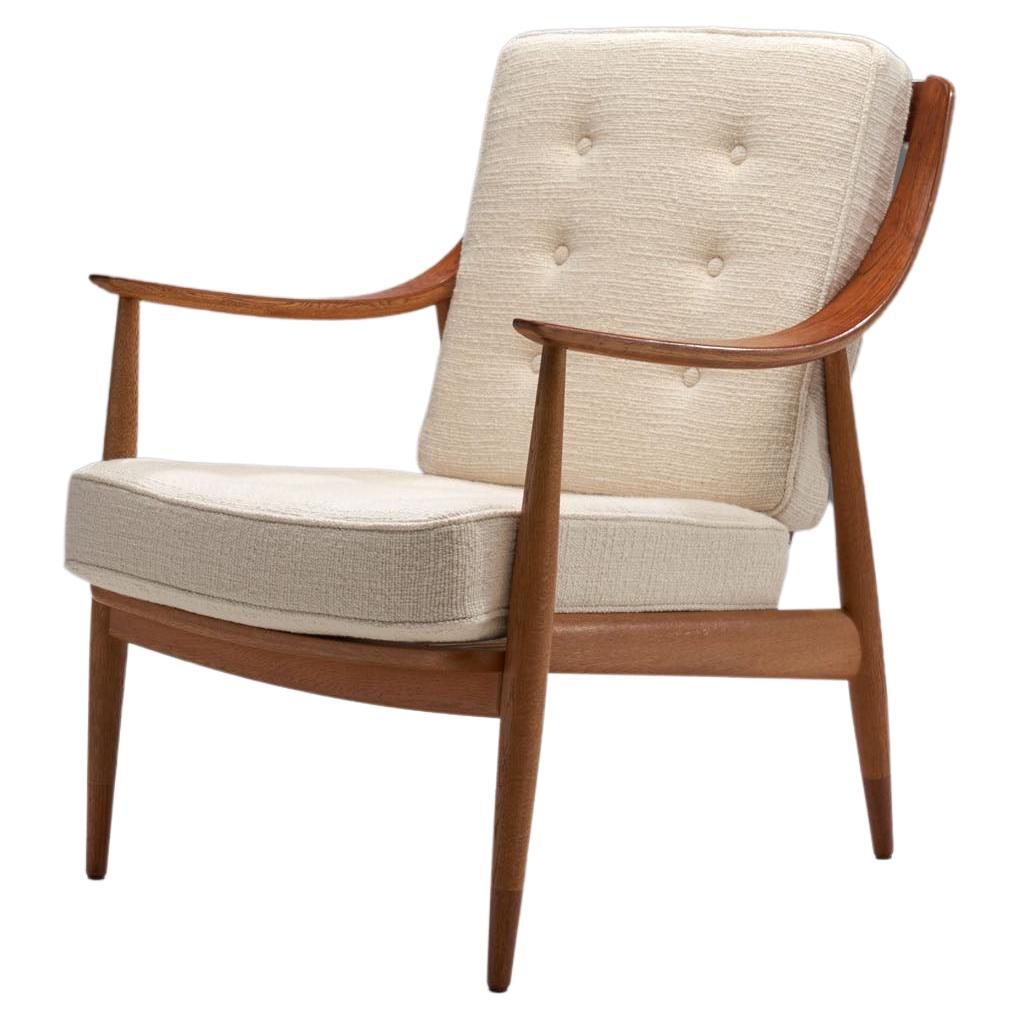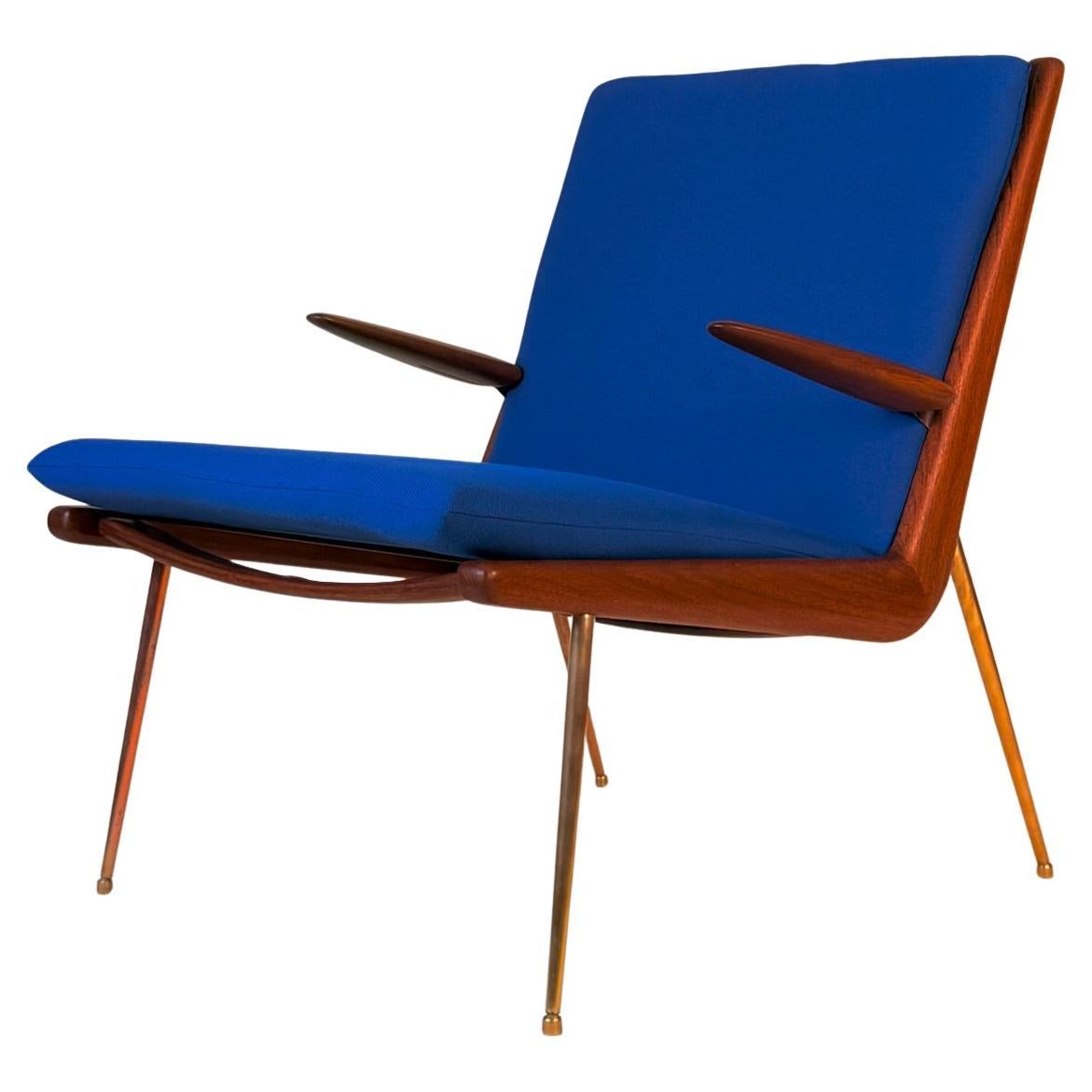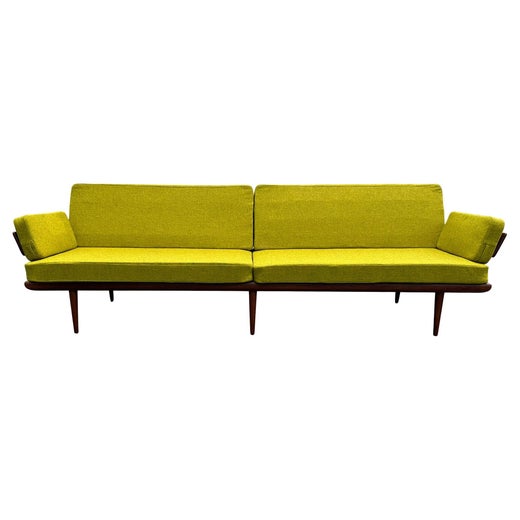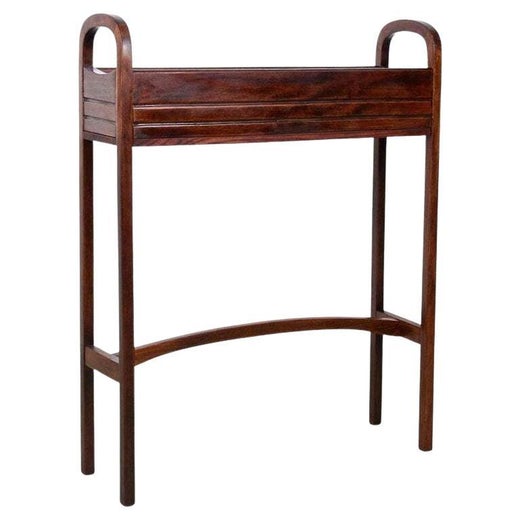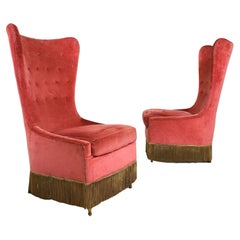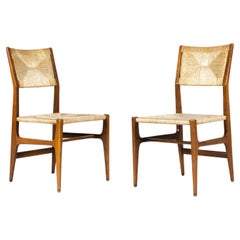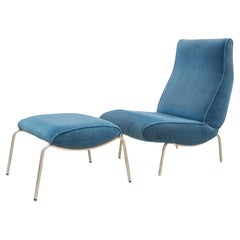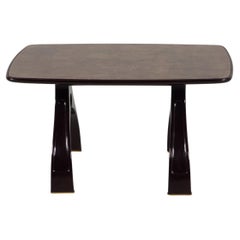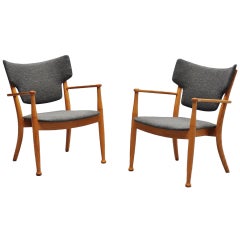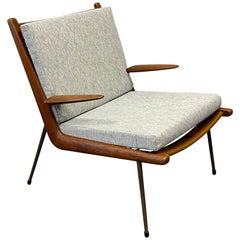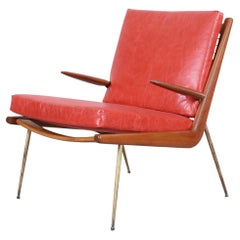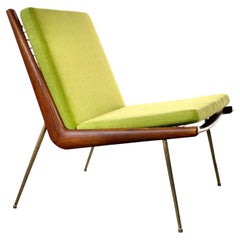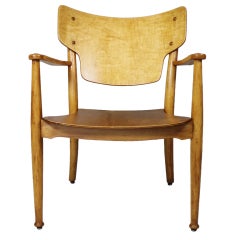
Stackable Arm Chair PORTEX by Peter Hvidt & Orla Mølgaard Nielsen, around 1944
View Similar Items
Stackable Arm Chair PORTEX by Peter Hvidt & Orla Mølgaard Nielsen, around 1944
About the Item
- Creator:
- Dimensions:Height: 32.29 in (82 cm)Width: 24.02 in (61 cm)Depth: 24.41 in (62 cm)
- Style:Mid-Century Modern (Of the Period)
- Place of Origin:
- Period:
- Date of Manufacture:1944
- Condition:
- Seller Location:Berlin, DE
- Reference Number:1stDibs: LU9831811130
Peter Hvidt
One half of the influential Danish furniture duo Hvidt and Mølgaard, architect and designer Peter Hvidt created shapely works in teak and rosewood that could be mass-produced and transported at a scale rarely seen before his time. Alongside his business partner, Aalborg-born designer Orla Mølgaard-Nielsen, the pair crafted furniture which stands today as a masterclass in the combination of elegance and practicality that is typical of Scandinavian modernism.
Hvidt was born in Copenhagen in 1916. He studied architecture and cabinetry, and graduated from the School of Arts and Crafts in Copenhagen. Hvidt established his own design firm in 1940 and taught for three years at his former school, during which he designed the teak Portex chair — Denmark’s first stacking chair (this design has alternatively been attributed to Hvidt’s partnership with Mølgaard-Nielsen over the years).
The exceptional collaboration between Hvidt and Mølgaard-Nielsen took shape in 1944. A student of pioneering Danish modernist designer and architect Kaare Klint and fellow graduate of the School of Arts and Crafts, Mølgaard brought his technical prowess and eye for practical design to the partnership. Together, for more than three decades, Hvidt and Mølgaard would produce over 250 furniture designs, a legacy that included the iconic AX chair.
A masterpiece of technical expertise and innovative woodworking, the sculptural AX armchair was designed in collaboration with manufacturer Fritz Hansen during the late 1940s. It features double-curved laminated wood in the seat and back, and is an early example of knock-down furniture. This meant that it could be easily dismantled and assembled at its destination, which rendered the chair economical for transport on cargo ships and therefore could reach a worldwide audience. The AX went into production in 1950 and eventually gave way to a series that featured tables and other seating.
Hvidt’s proclivity for forward-looking design was typical of the venturesome furniture makers of the mid-century modern era. This extended to textures and materials, too — he believed that a tasteful combination of materials could add character and visual intrigue. With Mølgaard-Nielsen, Hvidt designed streamlined coffee tables, rosewood chairs upholstered with sumptuous black leather and teak side tables with cane shelves (teak was a sought-after material for designers at the time).
The duo’s work with celebrated manufacturers Fritz Hansen, France & Søn and Søborg Møbelfabrik has been a part of exhibitions at New York’s Museum of Modern Art, Copenhagen’s Design Museum and the National Gallery of Victoria in Melbourne.
On 1stDibs, find vintage Peter Hvidt seating, tables and case pieces.
Thonet
For more than 180 years, Thonet — or Gebrüder Thonet — has produced elegant and durable tables and cabinets as well as chairs, stools and other seating that wholly blur the lines between art and design. Widely known as a trailblazer in the use of bentwood in furniture, the European manufacturer has reimagined the places in which we gather.
Noted for his skill in parquetry, German-Austrian company founder Michael Thonet received an invitation from Austrian Chancellor Prince Metternich to contribute Neo-Rococo interiors to the Liechtenstein City Palace in Vienna. The Boppard-born Thonet had honed his carpentry skills in his father’s workshop, where he carried out experiments with plywood and modified the Biedermeier chairs that populated the studio.
Thonet’s work for the chancellor raised his profile, and the cabinetmaker gained international recognition, including at London’s Great Exhibition of 1851, which featured works created by members of the Arts and Crafts movement as well as industrial products of the day. Thonet showed a range of furniture at the fair and won the bronze medal for his bentwood chairs. He incorporated his family’s company, the Thonet Brothers, with his sons in 1853.
Bentwood furniture dates as far back as the Middle Ages, but it is the 19th-century cabinetmaker Thonet who is most often associated with this now-classic technique. Thonet in 1856 patented a method for bending solid wood through the use of steam, and from there, the bentwood look skyrocketed to furniture fame. The works of renowned mid-century modern designers such as Alvar Aalto, Arne Jacobsen, and Charles and Ray Eames that put this technological advancement to use would not be as extensive or celebrated were it not for the efforts of the pioneering Thonet.
Considered the world’s oldest mass-produced chair, Michael Thonet’s ubiquitous Chair No. 14 demonstrated that his patented bentwood technology made it possible to efficiently produce furniture on an industrial scale. Now known as the 214, it won the German Sustainability Award Design for 2021, a recognition of the company’s commitment to environmentally responsible production.
Often called the Coffee House chair — the company’s first substantial order was for a Viennese coffeehouse — the No. 14 remains an icon. Thonet originally designed the chair in 1859, and it is considered the starting point for modern furniture.
The bentwood process opened doors — there were investments in machinery and new industrial processes, and the business began mass-producing furniture. By the end of the 1850s, there were additional Thonet workshops in Eastern Europe and hundreds of employees. Michael Thonet’s reputation attracted the attention of notable architects including Otto Wagner, Marcel Breuer and Ludwig Mies van der Rohe.
The No. 14 was followed by the No. 18, or the Bistro chair, in 1867, and the 209, or the Architect’s chair, of which Le Corbusier was a fan. (The influential Swiss-French architect and designer used Thonet furniture in his Pavillon de l’Esprit Nouveau at the 1925 International Exposition of Decorative Arts in Paris.)
Thonet’s chair designs also appeared in artwork by Toulouse-Lautrec, John Sloan and Henri Matisse in his Interior with a Violin Case. The noteworthy Thonet rocking chair remains a marvel of construction — in the middle of the 19th century, Michael produced a series of rockers in which the different curved parts were integrated into fluid, sinuous wholes. Thanks to Thonet, the humble rocker acquired something unexpected: style. It was captured in the paintings of Pablo Picasso, Pierre-Auguste Renoir and James Tissot.
Thonet is currently split into global divisions. Thonet Industries U.S.A. was acquired in 1987 by Shelby Williams and joined the CF Group in 1999, while the Thonet brand in Germany is owned by Thonet GmbH.
Find a collection of antique Thonet furniture on 1stDibs.
More From This Seller
View AllVintage 1950s Italian Mid-Century Modern Lounge Chairs
Brass
Vintage 1950s Italian Mid-Century Modern Chairs
Plastic, Walnut
Mid-20th Century Italian Mid-Century Modern Lounge Chairs
Velvet
Vintage 1940s Italian Mid-Century Modern Side Tables
Brass
Vintage 1950s Italian Mid-Century Modern Armchairs
Oak
Vintage 1960s Italian Mid-Century Modern Armchairs
Faux Leather, Plywood
You May Also Like
Vintage 1940s Danish Scandinavian Modern Armchairs
Fabric, Oak
Vintage 1950s Danish Mid-Century Modern Lounge Chairs
Brass
Vintage 1950s Danish Mid-Century Modern Lounge Chairs
Brass
Mid-20th Century Danish Mid-Century Modern Lounge Chairs
Brass
Vintage 1950s Danish Mid-Century Modern Lounge Chairs
Fabric, Wood, Teak
Vintage 1950s Danish Scandinavian Modern Lounge Chairs
Metal
